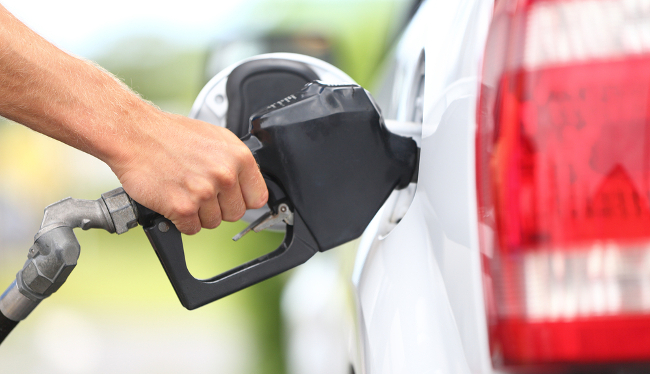
While Elon Musk has been talking like it’s a done deal, it wasn’t until this morning that SolarCity and Tesla, both owned by Musk, officially declared that they were planning to merge. It’s not quite set in stone, though. Musk, as the main player in both companies, had to recuse himself from voting on the deal. But it seems likely to happen, and then the two will take on possibly their biggest opponent: the nation’s love of gasoline.
The High Cost Of Gas
America is a country powered by fossil fuels. We go through nearly 20 million barrels of oil a day, and most of that is in the form of fuel. Gasoline for our cars, diesel for our trucks, aviation fuel, heating fuel, all of it burns across the country 24 hours a day, seven days a year, and scientists agree that our love of Texas tea isn’t a good thing. This year has been the hottest Earth has ever seen, and if that feels like a familiar headline, it’s because 2015 previously held that record.
Something needs to change, which is basically the line that launched Tesla’s quest to make electric cars for the mainstream. It’s worked, too. Tesla, while small, has managed to sell thousands of cars in an industry littered with failed companies. What Tesla needs to compete with the big auto manufacturers, though, is an abundance of places for Tesla owners to plug in — both to support its vehicles and its master plan. That’s where Solar City comes in, with plug-in kiosks powered by solar technology and solar panels on the roof of every Tesla. Which raises the question, “Will it work?”
Can Solar Power Replace Gas?
SolarCity, much like Tesla, delivers on the promise of a technology we’ve heard about for years but have rarely seen. It’s a multibillion dollar enterprise that installs solar panels in homes and offices across the country, but making solar power more economical and efficient has been a struggle since the 1970s. SolarCity’s installations can help mitigate fossil fuel use, but as of right now, except in the sunniest of places, it’s difficult to replace a building’s energy needs with the power of the sun.

But what about cars? One of the key efforts of the merger is to put solar-powered Tesla charge stations across the country and potentially around the world. Not to mention embedding solar panels in the roof. However, that’s heavily dependent on a few factors, and right now, it may not be able to keep up with demand at charging stations, let alone the power demands of individual cars.
Take the Tesla Model S — the luxury sedan. It comes with, at minimum, a 60 kilowatt (kW) battery. To fully charge that battery at current solar efficiency — roughly 20 percent of the energy that strikes the cell from the sun — you’d need 10 square meters of solar panels to charge one car in one day in Southern California… but 15 square meters of panels to charge one car in one day in New York state. With 140,000 Teslas and counting, that’s a lot of solar panels.
It’s fair to point out that solar panels are rapidly becoming more efficient, and even a 10 percent increase in efficiency would get more out of solar farms. Similarly, if you paired the solar charging stations and solar car roofs, that would reduce power needs. Still, it’s hard to see where the master plan goes without some heavy improvements in efficiency or an unanticipated technological breakthrough.
From Gas To Electric
One thing, however, is absolutely certain: The gas guzzler is on its way out. By 2025, auto manufacturers will be expected to squeeze 55 miles out of every gallon of gas, a standard that will be more or less impossible to meet without some form of hybrid engine or electrical assistance. We’ll be pumping electricity, not gas, into our cars sooner rather than later. And that’s good news for Tesla, at least from a car perspective. But where that electricity comes from remains an open question, and Tesla and SolarCity might struggle to find the answers.
